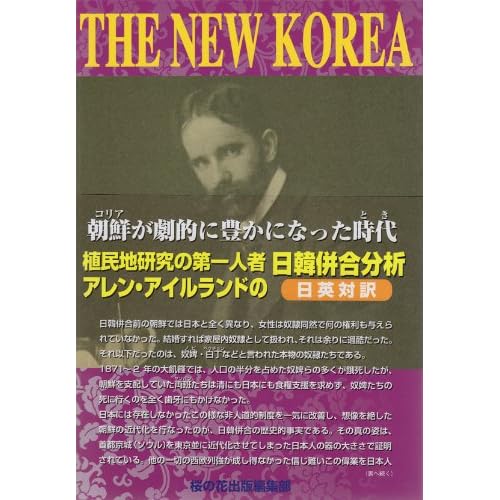Hillenbrand's Description of Koreans...
One of the most shocking episodes in the book is the Japanese massacre of 5,000 Koreans on Tinian, which I have never heard of. Before discussing trustworthiness of this episode, let me talk about Hillenbrand's description of Korean people in her book.Hillenbrand portrays the Koreans as powerless, miserable slaves just as she does POW's detained in Japan. I found the way she describes Korean people in her book quite insulting and inappropriate.
She does not seem to have done much research about Japan-Korea relationship at that time.
Koreans during Japan's Annexation of Korea(1910-1945)
Did Japan steal all Korean's wealth during the annexation period? No! Unfortunately, the Korean peninsula had been in a chaotic situation for a long time. Thus, Japan invested into Korea with the tax money from mainland Japan.Infrastructure was built. Here are pictures of Namdaemun Boulvard in Seoul in 1880's and 1936.
Japan established 5,213 elementary schools all over the peninsula, resulting in a dramatic increase of the literacy rate from 3.8% to 80%.
Did Japan prohibit the Koreans from learning Korean language? No, here is the textbook. The top is one type of Japanese script, katakana and the bottom is Korean script, Hangul.
Yes, they had to learn both for communications.
Japan established higher education institutions as well. For example, the current Seoul National University was formerly Keijo Imperial University, one of the most prestigious universities.
Koreans were allowed to enter the Imperial Japanese Army Academy.
Korean population doubled from 13 million to 25 million and their life expectancy was extended from 24 years to 56 years during the annexation period.
Korean people had a right to vote in mainland Japan. (the ethnic Japanese did not have a right to vote outside mainland Japan, either.)
Though not perfect, Koreans were treated almost equally with Japanese.
Fore sure, Korean people under the annexation were not miserable slaves.
If you are interested in the Japan-Korea annexation, I strongly recommend this book:
"The New Korea" by Alleyne Ireland (in English with Japanese translation)
Koreans Portrayed in "Unbroken"
Koreans appear in "Unbroken" in two episodes. One is in the episode when Zamperini was detained in Omori camp. Second episode is the massacre in Tinian. Hillenbrand mentions this incident twice.Omori Camp Episode
First, the Omori camp episode. Hillenbrand claims that the POW's in Omori were treated as slaves.One day, Zamperini's colleague POW handed in a bag of stolen rice to a Korean driver in exchange for an English laguage paper. (p.399 in my paperback version)
My first question is, giving stolen rice to someone else? Weren't the POW's starving? The description of Omori in "Unbroken" is full of contradictions, in my opinion.
There is another book about Omori camp titled "Clutch of Circumstance" written by Lewis W. Bush. Here is the Japanese version.
This book will give you quite a different perspective about POW's life in Omori camp.
Second question is how the POW distinguished Korean from Japanese? At that time, Koreans in Tokyo could speak Japanese. And why not Japanese? It is more likely to encounter ethnic Japanese in Tokyo. Because the Japanese are all cruel? Because they all regarded POW's as slaves? Instead, Koreans were suppressed by Japanese just as POW"s were? That's why POW's considered Koreans as their fellows?
Tinian Massacre Episode
Another episode of Koreans is, of course, the Japanese massacre of Koreans in Tinian. Hillenbrand mentions this even twice."...Tinian, where the Japanese held five thousand Koreans, conscripted as laborers....the Japanese employed the kill-all policy. They murdered all five thousand Koreans." (p.354)
"...Japan had brought atrocity and death on a scale that staggers the imagination...
In accordance with the kill-all order, the Japanese massacred all 5,000 Korean captives on Tinian, ..."
(p.502-503)
Hillenbrand states that before the landing of the U.S. Marines on Tinian that took place on July 24, 1944, Japanese slaughtered all the Koreans on the island.
You know, Saipan, only 3.5 miles away from Tinian, had been already taken by the United States on July 9, 1944. Wouldn't it be better for the Imperial Japanese Army to save bullets and get prepared for the battle with the Marines?
Why the Japanese Army had to be bothered by killing Japanese citizens? Koreans were not slaves, but Japanese citizens!
And what is the kill-all policy? We have never heard of it!
Also, if the author's claim were true, how were the Koreans murdered? Were they standing in front of soldiers so that they were killed systematically because they were powerless slaves? Was the killing of 5,000 people that easy?
Again, if the murder were true, what were the reactions of their fellows in Korean Peninsula or mainland Japan?
And most importantly, what would be the reaction of Korean officials or soldiers in the Japanese Imperial Army? Did they keep silent because they were too coward?
Didn't Hillenbrand realize that there were Korean officials and solders in the Japanese Army. I bet not!




No comments:
Post a Comment